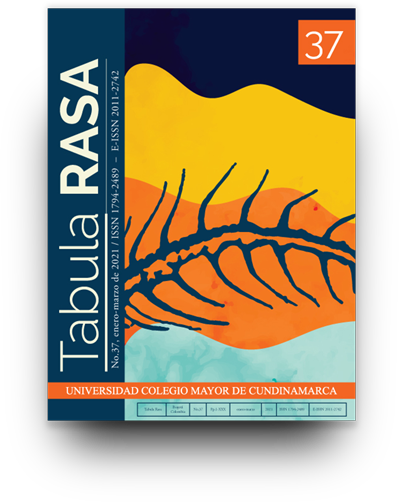Immobile but not Motionless. The Sahrawi Sedentarization as a Strategy of Adaptation and Response to Survive; on The Possibility of an Immobile Nomadism
Inmóviles, pero no quietos. La sedentarización de los saharauis como estrategia de adaptación y respuesta a la supervivencia. Sobre la posibilidad de un nomadismo inmóvil
Show authors biography
The nomadic/sedentary polarities are today questioned as Western constructions. Its deconstruction is necessary in contexts where nomadic populations become refugees for climatic, political and/or economic reasons. This is the case with Sahrawis’ exile in Algeria after Maroq was invaded in 1975 and Western Sahara was occupied until the present day. Sahrawi refugee camps near Tindouf have been often studied in their relations to prior nomadic encampments. Examining Sahrawi’s most exceptional motions and their settlement forms throughout the 20th century, we want to pose the hypothesis of Sahrawi immobile nomadism. We support the urgency to consider multiple dimensions of time and motion
when analyzing nomadism, from the instant to the long durée of population movements. Thus, we can understand sedentarization in Sahrawi camps as a temporary survival strategy. Keywords: Sahrawi Refugee camps; motions and spatialities; nomadism; immobile nomadism; sedentarization; protracted refugeehood, Western Sahara, Tinduf.
Article visits 114 | PDF visits 68
Downloads
- Bárbulo, T. (2017). La historia prohibida del Sáhara español: Las claves del conflicto que condiciona las relaciones entre España y el Magreb. Barcelona: Destino.
- Bengochea Tirado, E. (2019). La sección femenina en la provincia de Sáhara: entrega, hogar e imperio. Barcelona: Edicions Bellaterra.
- Bonte, P. (2007). Essai sur les formations tribales du Sahara occidental : Approches comparatives anthropologiques et historiques. Waterloo: Luc Pire.
- Campuzano, M. M. (1954). Contribución al estudio del censo de población del Sahara español. Madrid: Consejo Superior de Investigaciones Científicas, Instituto de Estudios Africanos.
- Caratini, S. (2003). La république des sables : Anthropologie d’une révolution. Paris : L’Harmattan.
- Caratini, S. (1989a). Les Rgaybāt (1610-1934). 1: Des Chameliers a la conquete d’ un territoire. Paris: Éd. L’ Harmattan.
- Caratini, S. (1989b). Les Rgaybāt : 1610–1934. 2: Territoire et société. Paris: Éd. L’Harmattan.
- Caro Baroja, J. (1955). Estudios saharianos. Madrid: Consejo Superior de Investigaciones Científicas, Instituto de Estudios Africanos.
- El Hasnaui Ahmed, Z. (2017). El silencio de las nubes. Sevilla: Arma Poética Editorial.
- Fiddian-Qasmiyeh, E. (2014). The ideal refugees: Gender, Islam, and the Sahrawi politics of survival. Syracuse: Syracuse University Press.
- García, A. (2010). La historia del Sáhara y su conflicto. Madrid: Los Libros de la Catarata.
- Gimeno Martín J. C. (2007). Transformaciones socioculturales de un proyecto revolucionario: la lucha del pueblo saharaui por la liberación. Programa Cultura, Comunicación y Transformaciones Sociales. Universidad Central de Venezuela. http://www.globalcult.org.ve/doc/Monografias/MonografiaGimeno.pdf
- Gimeno Martín, J. C. & Robles Picón, J. I. (2015). Hacia una contrahistoria del Sáhara Occidental Les Cahiers d’EMAM. Études sur le Monde Arabe et la Méditerranée, 2425.: http://emam.revues.org/87
- Herz, M. (Ed.). (2013). From camp to city: Refugee camps of the Western Sahara. Zürich: Lars Müller Publishers.
- Hodges, T. (1983). Sahara occidental : Origines et enjeux d’une guerre du désert. Paris: L’Harmattan.
- Humphrey, C., Sneath, D., & Sneath, D. A. (1999). The end of Nomadism: Society, state, and the environment in Inner Asia. Durham: Duke University Press.
- Ingold, T. (2015) Líneas. Una breve historia, Barcelona: Gedisa.
- Isidoros, K. (2018). Nomads and nation-building in the Western Sahara: Gender, politics and the Sahrawi. London: I.B. Tauris.
- Katzer, L. (2019). Etnografías nómades. Teoría y práctica antropológica (pos) colonial. Buenos Aires: Editorial Biblios/ Culturalia.
- Lafontaine Carboni, J. & Gimeno, J. C. (2020). Reinvindicar un derecho al campamento. Sociedad Geográfica Española, La Ciudad. Las Ciudades, 66, 94105: https://sge.org/publicaciones/boletines/boletin-66-la-ciudad-ciudades/
- Laman, M.A. (pendiente de publicación) Sáhara Occidental. Sociedad y cultura.
- Leroi-Gouhan, A. (1971). El gesto y la palabra. Caracas: Ediciones de la Biblioteca. Universidad Central de Venezuela.
- López Bargados, A. (2003). Arenas coloniales: los Awlād Dalīm ante la colonización francoespañola del Sáhara. Barcelona: Edicions Bellaterra.
- Mahmud Awah, B. (2017). La entidad política precolonial saharaui. Madrid: Bubok Publishing.
- Martín Beristain, C. (Dir.) (2015). Los otros vuelos de la muerte: bombardeos de población civil en el Sáhara Occidental, Bilbao: Universidad del País Vasco, Instituto de Estudios sobre Desarrollo y Cooperación Internacional: Asociación de Amistad con el Pueblo Saharaui de Sevilla. https://www.euskalfondoa.org/files/galeria/files/Los%20otros%20vuelos%20de%20la%20muerte.pdf
- Martínez Milán, J. M. (2003). España en el Sáhara Occidental y en la zona sur del Protectorado en Marruecos, 1885-1945. Madrid: UNED.
- Marx, E. (1980). Wage labor and tribal economy of the Bedouin in South Sinai. In P. C. Salzman & E. Sadala (Ed.), When nomads settle: Processes of sedentarization as adaptation and response. (pp.111-123). New York: Praeger.
- Molina Campuzano, M. (1954). Contribución al estudio del censo de población del Sáhara Español. Madrid: Ed. Instituto de Estudios Africanos.
- Mundy, J. A. (2007). Performing the nation, pre-figuring the state: The Western Saharan refugees, thirty years later. The Journal of Modern African Studies, 45(02), 275. https://doi.org/10.1017/S0022278X07002546
- Portillo Pasqual del Riquelme, J. (2019). Los saharauis y el Sáhara Occidental. Madrid: Editorial Círculo Rojo.
- Rodríguez Esteban, J. A., & Barrado Timón, D. A. (2015). Le processus d’urbanisation dans le Sahara espagnol (1884-1975). Une composante essentielle du projet colonial. Les Cahiers d’EMAM, 2425. https://doi.org/10.4000/emam.743
- Salzman, P. C., & Sadala, E. (Eds.). (1980). When nomads settle: Processes of sedentarization as adaptation and response. New York: Praeger.
- Solana Moreno, V. (2017). Regenerating Revolution: Gender and Generation in the Sahrawi Struggle for Decolonization, PhD Thesis defended at the Dpt. of Anthropology in a collaborative with the Women and Gender Studies Institute, University of Toronto.
- Spivak, G. C. (1988). Can the subaltern speak? In C. Nelson & L. Grossberg (Eds.). Marxism and the Interpretation of Culture, (pp.271313). London: Macmillan.
- Villasante-de Beauvais, M. (1998). Parenté et politique en Mauritanie : Essai d’antropologie historique. Paris: Éd. L’Harmattan.
- Wilson, A. (2014). Ambiguities of Space and Control: When Refugee Camp and Nomadic Encampment Meet. Nomadic Peoples, 18(1), 3860. https://doi.org/10.3197/np.2014.180104




